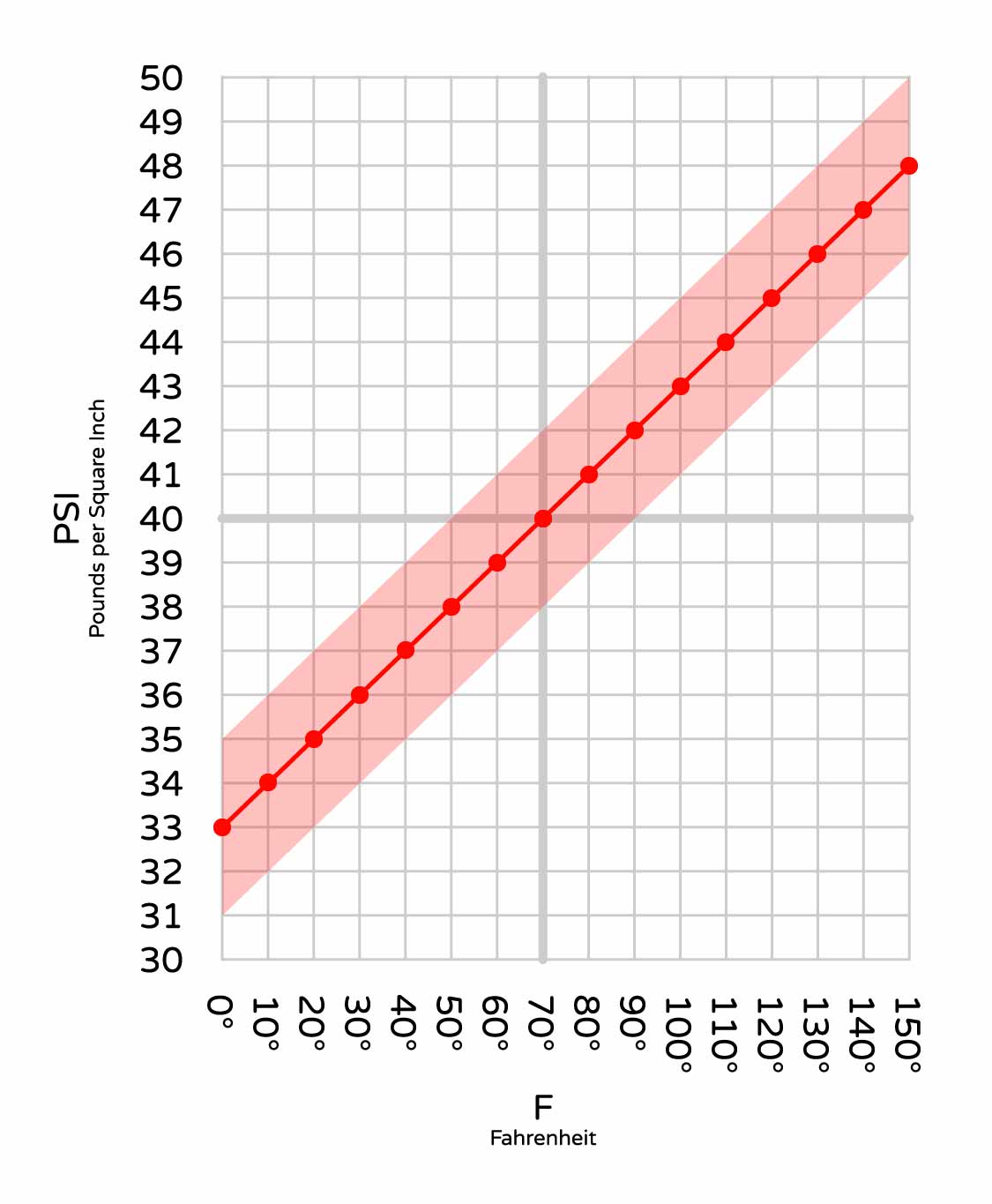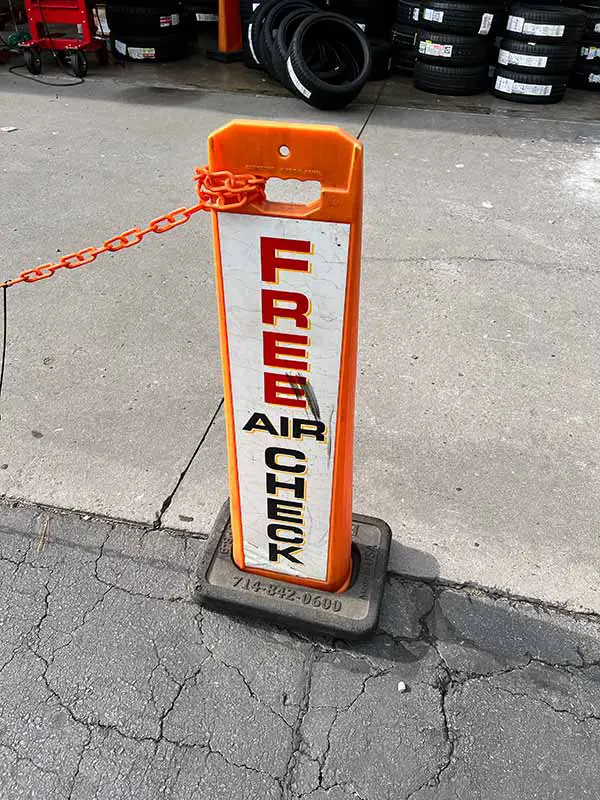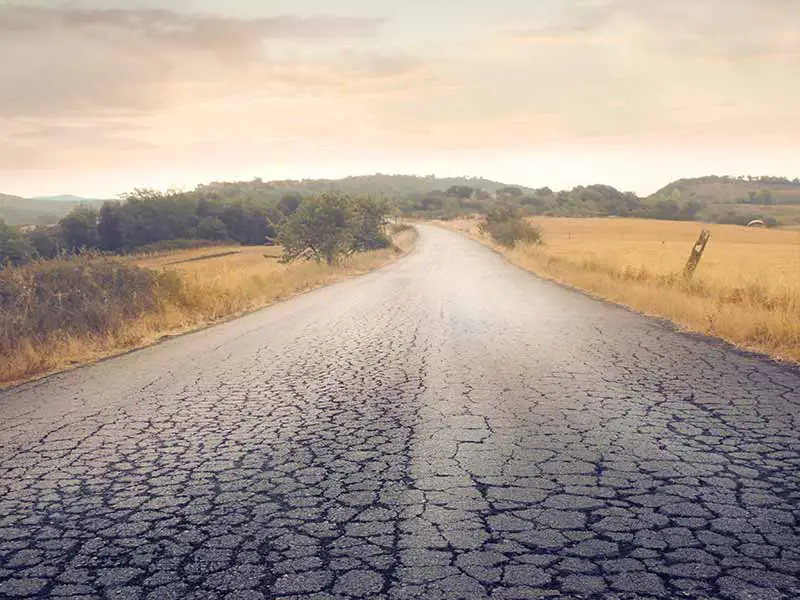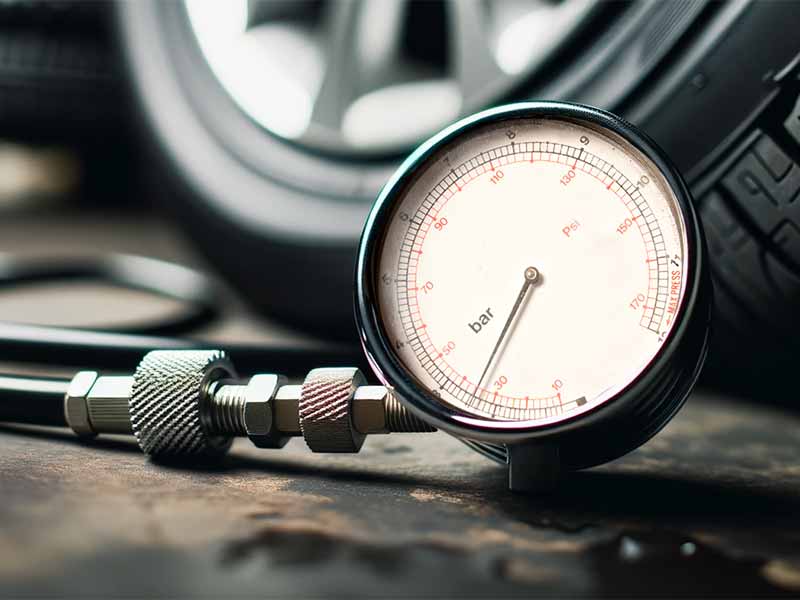Have you ever wondered why your tire pressure seems to change on its own? It’s a sunny day, you’re about to hit the road, and suddenly your car tells you there’s something off with your tire pressure. You might think, “Didn’t I just fill them up?” Understanding the fluctuations in tire pressure can help keep your drives smoother and safer.
Why Does Tire Pressure Fluctuate?
Tire pressure fluctuates due to factors like changes in air temperature, the amount of driving, and the seasons. Both external factors and natural air loss from the tire contribute to these changes.
In this article, we will delve deep into the science behind tire pressure, explore how it changes while driving, understand its seasonal variations, and discuss the importance of regularly monitoring it. By the end, you’ll have a comprehensive understanding of why tire pressure is a vital aspect of vehicle maintenance.
Let’s take a closer look.

The Science Behind Tire Pressure
Tire pressure is all about the amount of air in your tire. Think of it like blowing up a balloon. The more air you put in, the harder and rounder the balloon gets. Tires work in a similar way. The amount of air in them can change how they feel and work on the road.
Why Air Pressure in Tires is Important
- Safety First: Proper tire pressure makes sure your car handles well on the road. This means you can steer, turn, and stop safely.
- Long-lasting Tires: When tires have the right amount of air, they wear out more evenly. This means you don’t have to buy new tires as often.
- Save Money on Gas: Cars use less gas when the tires have the right air pressure. So, you can drive further with the same amount of gas.
Factors That Can Change Tire Pressure
- Air Temperature: Air inside the tire can expand (get bigger) or contract (get smaller) based on the temperature.
- On a hot day, the air inside the tire can get warmer and expand. This can make the tire pressure go up.
- On a cold day, the air inside the tire can get cooler and contract. This can make the tire pressure go down.
- Expert Tip: Always check your tire pressure when the tires are cool, like in the morning. This gives you a more accurate reading.
- Driving for a Long Time: When you drive, your tires move and create heat. This heat can make the air inside the tire expand and increase the tire pressure.
- Small Leaks: Sometimes, tires can have tiny leaks that are hard to see. These leaks can slowly let air out and reduce the tire pressure.

Fluctuations While Driving
When you’re on the road, your tires are always on the move. Just like how a runner’s shoes might wear out faster with more running, a tire’s pressure can change with more driving. Here’s a simple look into how and why this happens.
Heat from Driving
As you drive, your tires are rolling and gripping the road. This action creates heat.
- More Heat, More Pressure: The heat from driving can make the air inside your tires warm up. Warmer air expands, which means it takes up more space. So, the tire pressure can go up after you’ve been driving for a while.
- Cooling Down Reduces Pressure: After you stop and park your car, your tires start to cool down. As they cool, the air inside contracts (gets smaller). This can make the tire pressure drop a bit.
If you’re checking tire pressure after driving, the number might be a bit higher. It’s best to wait a while after driving, or check in the morning for the most accurate reading.
The Impact of Continuous Driving
Driving for a long time without breaks can affect your tires.
- Tires Get Warmer: The longer you drive, the warmer your tires can get. This is because they don’t have much time to cool down.
- Pressure Increases More: With more heat, there’s a bigger increase in tire pressure. It’s not just the air inside the tire that gets warmer. The tire itself can get very hot.
On long trips, it’s smart to take breaks. Not just for you, but for your car too. A short break lets your tires cool down a bit.
The Importance of Tire Pressure Balance
Having balanced tire pressure means all your tires have about the same amount of air. This balance is key.
- Even Wear: When tire pressure is balanced, all tires wear out at about the same rate. This means you won’t have one tire that wears out way before the others.
- Better Control: With even tire pressure, your car handles better. It’s easier to steer and control.

Fluctuations While Driving
When you’re on the road, your tires are always on the move. Just like how a runner’s shoes might wear out faster with more running, a tire’s pressure can change with more driving. Here’s a simple look into how and why this happens.
Heat from Driving
As you drive, your tires are rolling and gripping the road. This action creates heat.
- More Heat, More Pressure: The heat from driving can make the air inside your tires warm up. Warmer air expands, which means it takes up more space. So, the tire pressure can go up after you’ve been driving for a while.
- Cooling Down Reduces Pressure: After you stop and park your car, your tires start to cool down. As they cool, the air inside contracts (gets smaller). This can make the tire pressure drop a bit.
- Expert Tip: If you’re checking tire pressure after driving, the number might be a bit higher. It’s best to wait a while after driving, or check in the morning for the most accurate reading.
The Impact of Continuous Driving
Driving for a long time without breaks can affect your tires.
- Tires Get Warmer: The longer you drive, the warmer your tires can get. This is because they don’t have much time to cool down.
- Pressure Increases More: With more heat, there’s a bigger increase in tire pressure. It’s not just the air inside the tire that gets warmer. The tire itself can get very hot.
The Importance of Tire Pressure Balance
Having balanced tire pressure means all your tires have about the same amount of air. This balance is key.
- Even Wear: When tire pressure is balanced, all tires wear out at about the same rate. This means you won’t have one tire that wears out way before the others.
- Better Control: With even tire pressure, your car handles better. It’s easier to steer and control.

Seasonal Variations and Tire Pressure
Each season brings its own kind of weather. Just like how you might wear different clothes in summer and winter, your tires also react differently to the changing seasons. Here’s how the seasons can affect your tire pressure.
Summer Heat and Your Tires
Summer days can get really hot. This heat can affect your tires in a few ways:
- Air Expansion: Just like on a hot day when you feel like you need more space, the air inside your tires feels the same. It expands because of the heat. This can raise the tire pressure.
- Road Heat: Roads can get very hot in summer. When you drive, your tires are in direct contact with this hot road. This extra heat can make the tire pressure rise even more.
Winter’s Chill and Tire Pressure
Cold winter days have the opposite effect on your tires:
- Air Contracts: Cold air takes up less space. So, inside your tires, the cold air contracts or gets smaller. This can lower the tire pressure.
- Cold Starts: On very cold mornings, your tire pressure might be lower than usual. As you drive and the tires warm up a bit, the pressure might go back to normal.
Changing Seasons, Changing Pressures
As seasons change from hot to cold and back, your tire pressure can go up and down.
- Spring and Fall: These are in-between seasons. Some days might be warm, and others might be chilly. It’s a good idea to check your tire pressure more often during these times.

External Factors Affecting Tire Pressure
Apart from driving and the changing seasons, there are other outside things that can change the pressure in your tires. Let’s dive into some of these factors and understand how they play a role.
Hot Weather and Direct Sunlight
It’s not just the season of summer that can make things hot. Sometimes, the place where you park your car can affect your tires.
- Direct Sunlight: Parking your car where it gets a lot of direct sunlight can heat up your tires. This is especially true if you park on a hot surface, like asphalt.
- Rise in Pressure: Just like in summer, the heat from direct sunlight can make the air inside your tires expand. This can increase the tire pressure.
Natural Air Loss
All tires lose some air over time. It’s a natural thing, just like how a balloon might slowly go flat after a few days.
- Slow Air Loss: Even if there are no holes or leaks, tires can lose a tiny bit of air over weeks or months.
- Regular Checks: Because of this slow air loss, it’s smart to check your tire pressure regularly, even if everything seems fine.
Invisible Leaks
Sometimes, a tire might lose air faster than usual, but you can’t see why.
- Hidden Issues: There might be a small puncture or a tiny leak somewhere that’s hard to spot.
- Valve Problems: The valve is the part where you put air into the tire. Sometimes, it might have a tiny issue that lets some air out.
Over the years, I’ve met many people who had tire troubles simply because they didn’t check their tire pressure regularly. It’s such a simple task, but it can save you from bigger problems down the road.
Resources
Below are some links you may find helpful when learning about tires
- How weather affect your vehicle’s tire pressure – Tires Plus
- How much does tire pressure change over time? – Tire Rack
Final Thoughts
From the influence of seasonal temperatures to the effects of prolonged driving, many factors can cause fluctuations in tire pressure.
Regularly monitoring this pressure, understanding the reasons behind its changes, and taking necessary actions are crucial for a smooth driving experience.
So, the next time your tire pressure seems a bit off, you’ll know exactly why and what to do about it.
Good luck and happy motoring.





